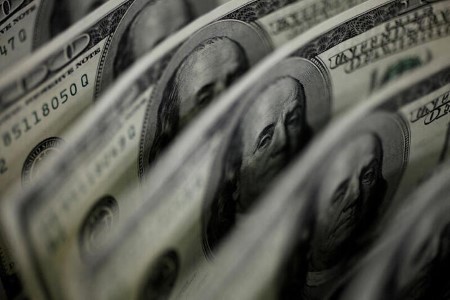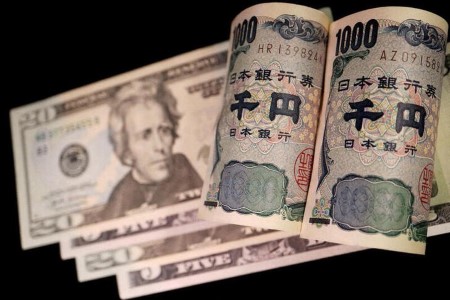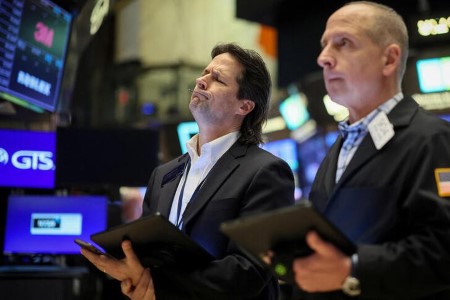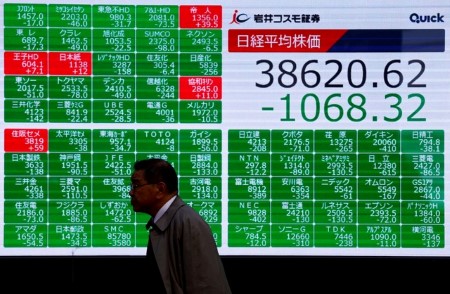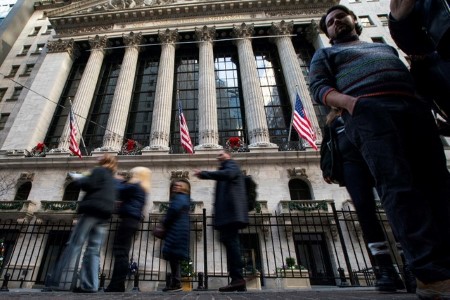NEW YORK – A strong earnings season and blockbuster reports from tech industry titans fueled a US stock market rebound from the first real swoon of 2024. Next week’s inflation data could determine whether the good vibes continue.
The benchmark S&P 500 index is up over 9% for the year, up near its late-March record high, following a 5% pullback that occurred last month.
The bounce has overlapped with a stronger-than-expected first-quarter reporting season for US companies. With well over 80% of the S&P 500 having reported results, companies are on track to have increased earnings by 7.8%, well ahead of the April expectation of 5.1% growth, according to LSEG IBES.
Still, some investors worry the rally could stall without evidence that inflation is cooling again. While Fed Chairman Jerome Powell has reassured markets the central bank is unlikely to raise rates anytime soon, months of strong inflation have led to concerns that policymakers will not cut them this year.
Strong earnings have “got investors feeling more comfortable about being in this market,” said Art Hogan, chief market strategist at B Riley Wealth. However, “the trajectory of inflation is always going to be important to us while we’re in a cycle where we expect the next thing for the Fed to do is to cut rates.”
Inflation reports have preceded market pivots in recent years, as the Fed has ramped up interest rates to cool consumer inflation from four-decade highs hit in 2022. Most recently, an April 10 release showing a third-straight month of stronger-than-expected inflation was followed by a roughly two-week decline in stocks as it spurred fears the Fed could raise rates this year.
Economists polled by Reuters expect the May 15 consumer price index report will show an increase of 0.3% in April from the previous month. Investors are also awaiting data on retail sales next week, as well as earnings from Walmart, Home Depot, and Cisco.
“If the CPI report comes in hotter, it’s going to likely price out any rate cuts for 2024,” said Matthew Miskin, co-chief investment strategist with John Hancock Investment Management. “You may actually have to start talking about policy that’s more restrictive if (inflation) is too hot relative to expectations.”
BOOST FROM EARNINGS
For now, bullish investors have gained confidence from a solid earnings season. Standouts included generally strong reports from most of the so-called Magnificent Seven tech and growth giants whose shares helped propel the market higher last year and continue to have a huge weighting in the S&P 500.
Among these, Alphabet announced its first dividend as the Google parent topped estimates for sales and profit, while Apple’s revenue fell less than feared as the iPhone maker unveiled a USD 110 billion stock buyback plan, the largest ever such authorization from a US company.
“There’s been enough in terms of upside surprise that’s helped to support the markets,” said Yung-Yu Ma, chief investment officer at BMO Wealth Management. “There was concern that it could even be somewhere between a modest and weak earnings season, which didn’t happen.”
With Nvidia the last of the group to report, on May 22, Magnificent Seven quarterly earnings are on track to jump 49.4%, according to Tajinder Dhillon, senior research analyst at LSEG.
Analysts are also becoming more upbeat about megacap financial prospects. Estimates for 2024 earnings for the six megacap companies that have reported have risen by 2.1% on average over the past 30 days, versus only a 0.1% rise in 2024 earnings estimates for the S&P 500 overall, according to Jessica Rabe, co-founder of DataTrek Research.
Still, investors have punished companies whose results missed expectations. These shares have underperformed the market by 3.2% this quarter, compared to 1.2% the previous quarter, according to a report from Manish Kabra, chief US equity strategist at Societe Generale.
That reaction is “not a major surprise, as this season overlapped with bond market volatility and a strong performance in the run-up to reporting,” Kabra said.
(Reporting by Lewis Krauskopf; Editing by Ira Iosebashvili and David Gregorio)







 DOWNLOAD
DOWNLOAD








